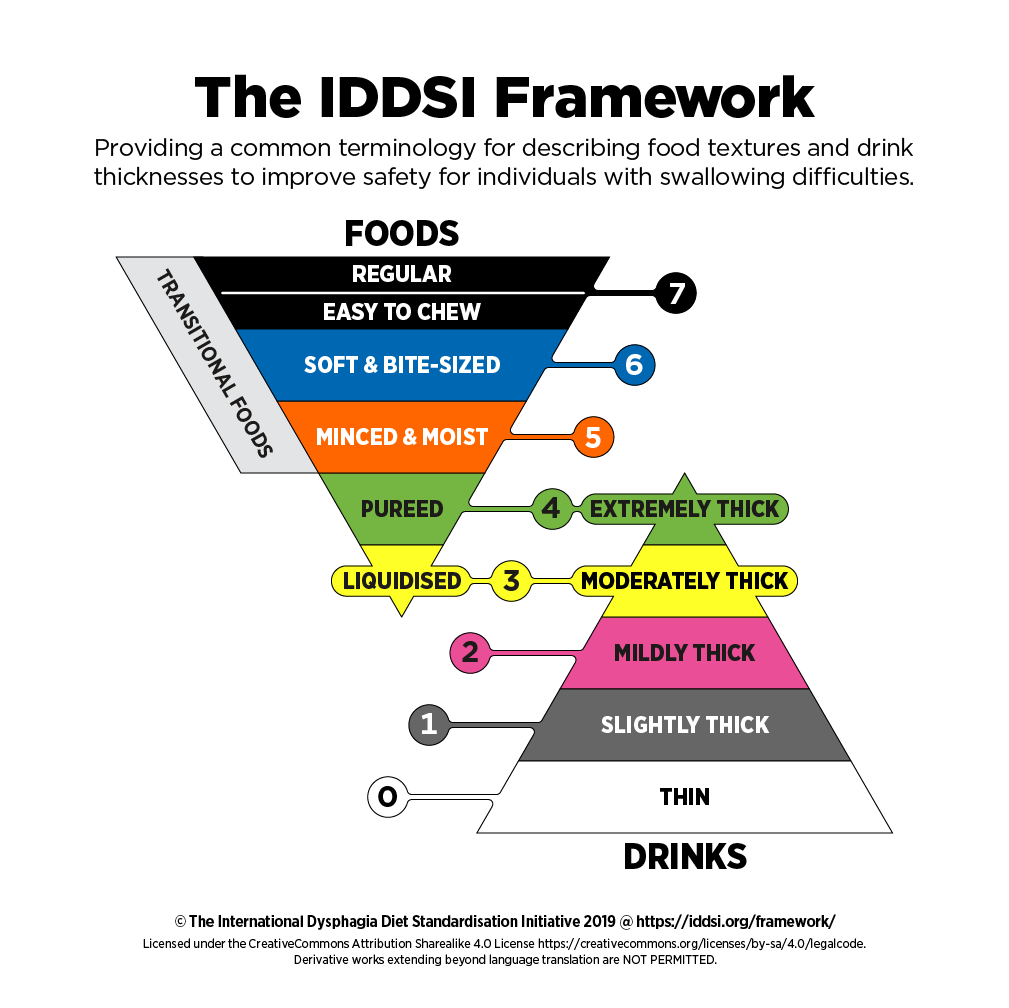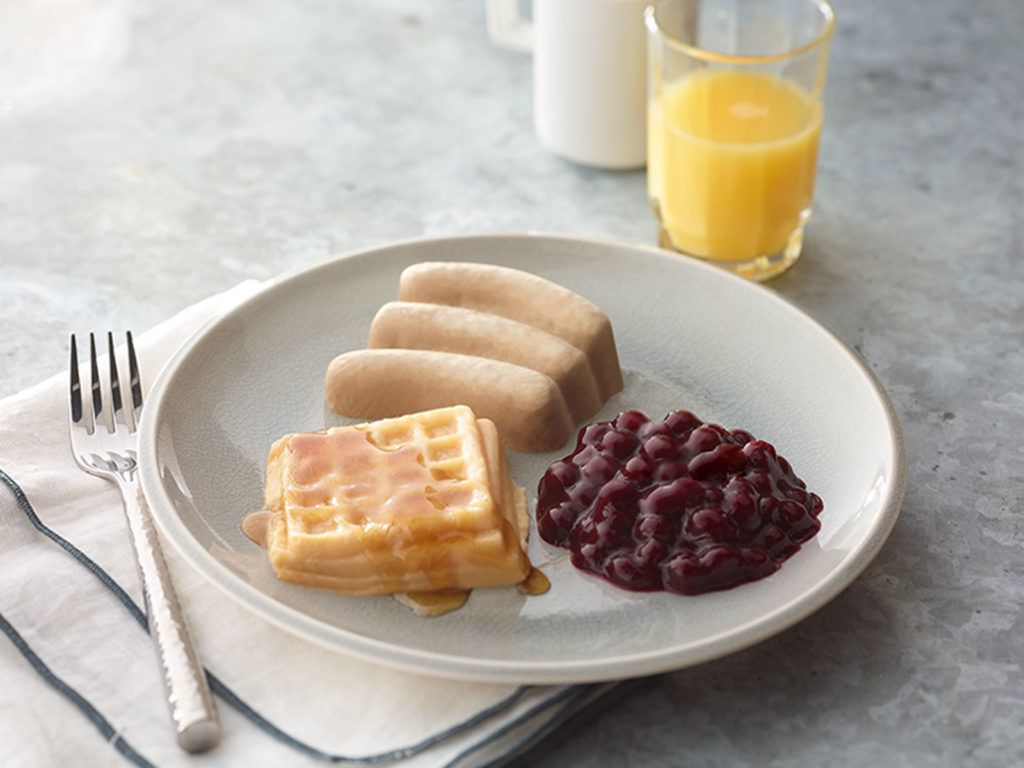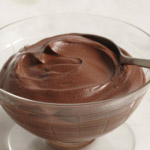“Pureed, Level 4” & “Liquidised, Level 3” IDDSI Diets Replaced “Dysphagia Puree”
by Karen Sheffler, MS, CCC-SLP, BCS-S of SwallowStudy.com
Your Speech-Language Pathologist (SLP) and medical team have recommended a Dysphagia Pureed Diet for you based on your swallow studies. Per the National Dysphagia Diet from 2002, the old term was “dysphagia puree.” Now the new label is just “Pureed,” per the International Dysphagia Diet Standardisation Initiative or IDDSI.org. Read more about “Why Puree,” to understand why a pureed diet has been recommended.
There is another IDDSI diet even smoother and more liquified than puree called: Liquidized, or Liquidised to show the international spelling. This would be for people who are unable to swallow even a thick puree (like applesauce, yogurt or pudding) due to getting a thicker textures stuck in the mouth, throat and/or esophagus (food tube). Most pureed foods can be thinned out with flavor-rich and calorically-dense liquids, but check with your registered dietitian to make sure you are not loosing calories by thinning out your purees.
See this IDDSI tab on Patient/Consumer/Caregiver Handouts (pediatric versions available too in chart at this link):
- Level 3 – Liquidised, Level 3 Diet Adults & Pediatrics
- Level 4 – Pureed, Level 4 Diet Adults & Pediatrics
You may be having difficulty swallowing (dysphagia) with regular foods and even with soft or minced solid textures. A smooth, moist and blended texture has been determined to be the safest diet in order to prevent choking and/or food getting stuck in your mouth, throat, and/or esophagus. Maybe any chewing or managing more solid foods causes you significant fatigue. You may find that pureed foods or even liquidized foods are an easy way to take in calories without a lot of effort or energy.
This diet is restrictive and may significantly impact your quality of life. At this time, though, a pureed diet texture has been found to be the easiest and safest for you to swallow. Your dysphagia may be significant at this time. Ask your therapist for a prognosis on how long you may need to stay with this diet.
The pureed diet is food blended smooth with no lumps or particles. Foods should be “pudding-like.” Make sure the pureed foods do not get dry, sticky or clumpy, especially as the food gets cold. I have seen mashed potatoes do this! Additionally, be careful with the pureed forms, as these need to be steamed for about 25 minutes to maintain moistures. I have seen pureed forms heated up in the microwave, and these can dry out on the edges and cause chokable clumps. The pureed food should feel all similar in your mouth (i.e., homogenous texture) and be without lumps. It should not stick to the roof of your mouth. Make sure the mouth is moistened before the meal if the person eating it has a dry mouth (i.e., from medications such as diuretics, anticholinergics, antidepressants and antipsychotics that often cause dry mouth). You can add sauces and gravy to a puree to make the food slippery. A puree item should feel like a moist-smooth cohesive ball of food (bolus), requiring very little manipulation or chewing. This may be especially helpful if chewing causes significant fatigue.
To make sure your pureed food is moist and smooth, try out the Spoon Tilt Test by IDDSI.org. The puree should slide off the spoon without sticking to the spoon. See The Spoon Tilt Test on page 7 of this Testing Methods document from IDDSI. You can find details of the IDDSI Framework and Testing Methods for all levels in many languages, including Pureed, Level 4 and Liquidised, Level 3, when you click here.

IDDSI framework for solids, drinks and transitional foods. Each IDDSI level has a name, color, number and triangle icon. Use at least two identifiers, such as Pureed, Level 4 or Liquidised, Level 3.
More Resources on Pureed, Level 4:
IDDSI Patient/Consumer Handout on Pureed Diet, which includes foods to consider and foods to avoid.
Check out my product review of pre-packaged pureed dishes and meals:
Thick & Easy® Pureed Meal Kits by HormelHealthLabs.com

Example of a breakfast from HormelHealthLabs Pureed Meal Kits. These are pureed forms, made to look like the real thing! Typically you will have to add sauces, gravies, butter, and/or syrup to these pureed forms to ensure a smooth IDDSI Level 4 Puree. Make sure your purees are smooth and moist throughout.
READ MORE in these blogs:
Why Puree? Do I need pureed food? What is an ideal pureed texture?
Recipes for People with Dysphagia: Don’t Forget Flavor
Even More Resources for Pureed, Level 4 and other IDDSI Information:
See all IDDSI Framework & Testing Methods here.
Read more about NDD changing to IDDSI here.
See a list of my curated IDDSI resources here.
Creating a Dysphagia Cookbook IDDSI-Style



Thx I really need only purée style foods for home. This is very helpful. Came here by clicking on my iPhone, I don’t speak but I understand English and Spanish. Thx! Here’s my email. Only purée stuff, please.
Thank you Yesenia Valdez.
Here are some more Puree resources:
1. Puree information from the International Dysphagia Diet (IDDSI): https://iddsi.org/IDDSI/media/images/ConsumerHandoutsAdult/4_Pureed_Adults_consumer_handout_30Jan2019.pdf
2. Spanish translated information on the diet framework from IDDSI: https://iddsi.org/IDDSI/media/images/Translations/IDDSI_Framework_Descritors_V2_LA_SPANISH_FINAL_July2020.pdf
3. Spanish translated information on how to test foods. See the Spoon Tilt Test pictures about Puree. See Puré, green level 4 triangle. https://iddsi.org/IDDSI/media/images/Translations/IDDSI_TestingMethods_V2__LA_SPANISH_FINAL_July2020.pdf
4. See this product review on pureed foods (Mom’s Meals): https://swallowstudy.com/services/peer-product-review-services/pureed-meals-by-moms-meals/
5. See this article on “Why Puree” is needed for some people. I write about how to make sure you have a smooth-easy to swallow puree: https://swallowstudy.com/why-puree/
Best wishes. Let me know if you have questions, and you can write in English or Spanish.
Sincerely,
Karen